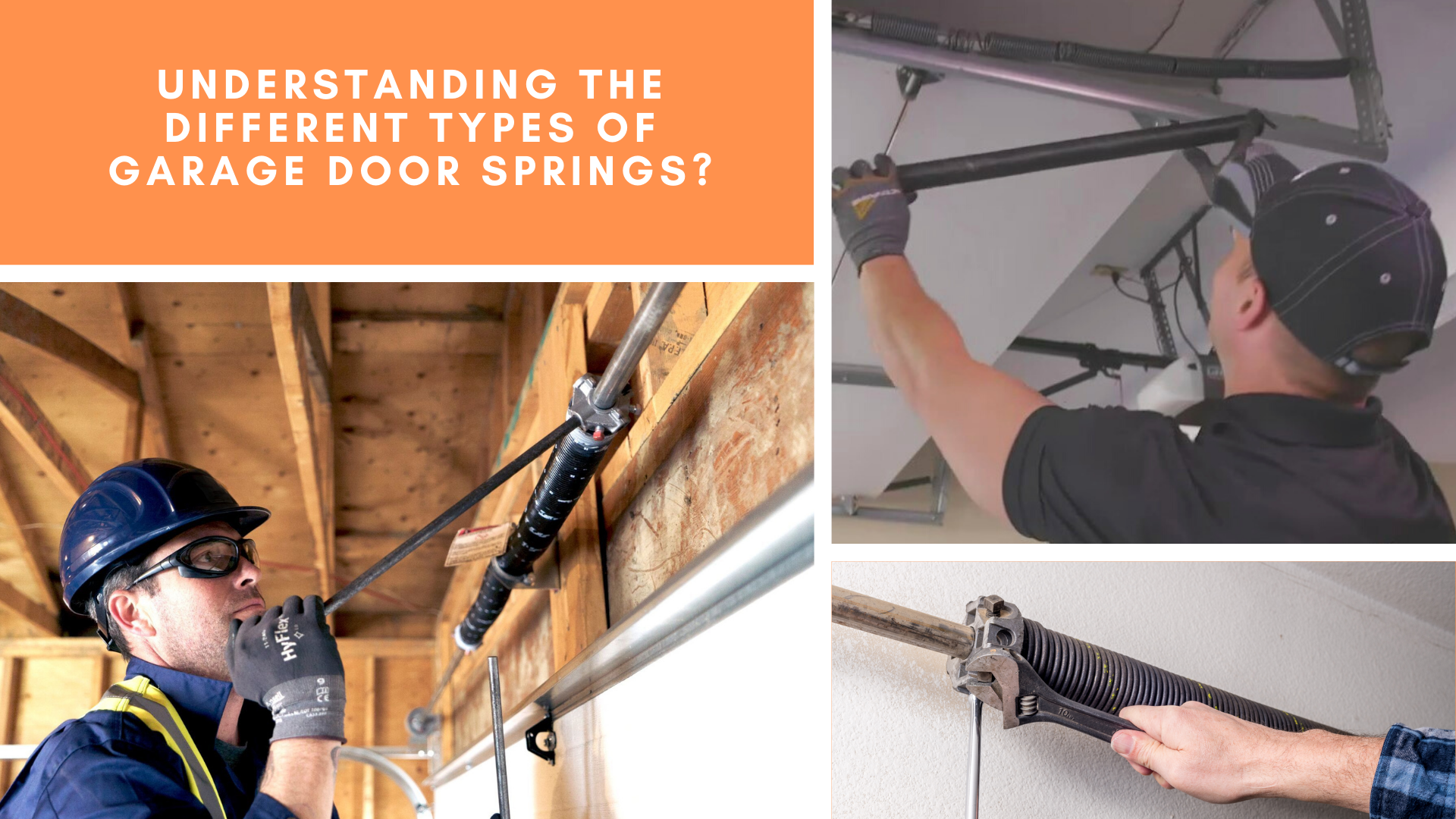
Springs are one of the most critical components of a garage door system. They provide the mechanical energy responsible for lifting and lowering the door. Over the years, several different types of garage door springs were made, with some having better qualities than others. Extension and torsion springs are the two different types of garage door springs used on overhead doors. Let us take a detailed look at both types and learn more about them.
Extension Springs
An extension spring is a coiled steel cable that holds up the weight of the garage door. Garage doors typically have extension springs on each side, running along the tracks perpendicular to the door with the cables tied to the ceiling and the door at either end. Extension springs are classified according to the ends types: open looped, double looped, and clipped ends.
Does your door need one or two extension springs?
A single extension spring is usually enough for light, single garage doors. Compared to torsion springs, extension springs store less energy needed to lift a garage door. So if you have a heavy garage door or a double door, it must have two extension springs for more power. Installing two extension springs is recommended for increased safety. If one extension spring breaks, the other can prevent the door from crashing to the ground.
Advantages of extension springs
Perhaps the main advantage to using extension springs is the cost. Extension springs are less expensive than torsion springs. Compared to a garage door with a torsion spring or springs, you can save money with extension springs. It is also ideal for garage doors that do not have enough room over the door to accommodate a tension spring.
Torsion Springs
Torsion spring is also a coiled steel cable mounted directly above the door opening, parallel to the garage door. The springs are part of an assembly referred to as the ‘counterbalance.’ It is the job of the counterbalance to counteract the force of gravity pulling on the door. There are three types of torsion springs used in garage door spring installation: standard torsion springs, early set torsion springs, and TorqueMaster springs.
Does your door need one or two torsion springs?
The number of springs on a garage door is determined by the door's weight and height, as well as the spring's size and strength. Usually, there is at least one torsion spring on a standard garage door system, although some can require up to four springs. In the past, it was pretty common to see garage doors with a single large spring. There are garage doors now that use two or more smaller torsion springs than a single large spring for safety reasons. If one of the torsion springs fails, the other will keep the door from plunging.
Advantages of torsion springs
The primary reason many garage door systems use extension springs is that they are more powerful. On top of that, this type of spring is also more durable and quieter. Another advantage is that they offer smoother movement and better balance to the door. Torsion springs do not need frequent garage door spring replacement because they are less prone to wear and tear.
Titan Garage Doors Quad Cities offers garage door repair services for residential, commercial, and industrial doors. We specialize in garage door spring repair and broken spring replacement. Our team is highly trained and experienced with all makes and models of garage door systems and is available 24/7 for emergency garage door repair calls. Call us today for Free Estimates!
garage door spring replacement
